
by fljustice | Dec 2, 2011 | Biographies, Books, History, Reviews, Wonderful Women
“Catherine the Great: Portrait of a Woman” by Robert K. Massie
From the book jacket:
“The Pulitzer Prize-winning author of Peter the Great, Nicholas and Alexandra, and The Romanovs returns with another masterpiece of narrative biography, the extraordinary story of an obscure young German princess who traveled to Russia at fourteen and rose to become one of the most remarkable, powerful, and captivating women in history.”
 Massie delivers a wonderfully researched and readable book. My knowledge of Catherine the Great was vague to the point of mythical. I had hazy memories of multiple lovers, a (possible) scandal about her and a horse, and a movie starring Greta Garbo. The lovers were real, but few; there was no mention of the horse; and the Garbo movie turned out to be about Queen Christina of Sweden who lived a century earlier. So much for memory.
Massie delivers a wonderfully researched and readable book. My knowledge of Catherine the Great was vague to the point of mythical. I had hazy memories of multiple lovers, a (possible) scandal about her and a horse, and a movie starring Greta Garbo. The lovers were real, but few; there was no mention of the horse; and the Garbo movie turned out to be about Queen Christina of Sweden who lived a century earlier. So much for memory.
To say Catherine is a fascinating character is to do her a disservice. Massie shows her towering intellect, force of personality, and steely resolve from an early age. He also shows her craving for love and approval; denied in childhood and in her marriage. But her story is not a simplistic psycho-drama, it’s populated with complicated characters, shifting political agendas (both domestic and foreign), and colored with the burgeoning philosophies of the Age of Enlightenment. (more…)
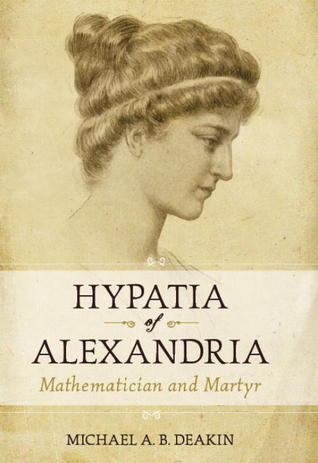
by fljustice | Nov 9, 2011 | Essays/Research, History, Hypatia, Wonderful Women
Hypatia: Great Mathematician or Geometry Teacher?
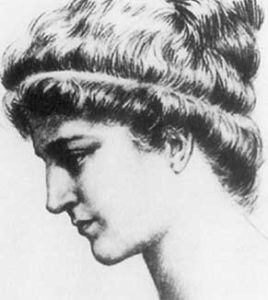 Hypatia, the Lady Philosopher of Alexandria, is best known for her gruesome murder at the hands of a mob in AD 415. Her martyrdom takes pride of place in the historical narrative of many groups including mathematicians and scientists. I’ve written extensively about my search for the “real” Hypatia and the politics surrounding her death. I’m still fascinated and set up a Google Alert on her name, so I can participate in online discussions. Mostly I get hits on her namesake philosophy magazine (they’re looking for a new editor), the digital archival materials software (recently released version 0.8.0) and the woman who blogs about her cat (Hypatia doesn’t like the new kittens.) About once or twice a month there will be a post from a student at some public Q&A site, “So I’m doing a paper on Hypatia. I heard she invented the hydroscope and helped her dad with his math book. What else did she do?”
Hypatia, the Lady Philosopher of Alexandria, is best known for her gruesome murder at the hands of a mob in AD 415. Her martyrdom takes pride of place in the historical narrative of many groups including mathematicians and scientists. I’ve written extensively about my search for the “real” Hypatia and the politics surrounding her death. I’m still fascinated and set up a Google Alert on her name, so I can participate in online discussions. Mostly I get hits on her namesake philosophy magazine (they’re looking for a new editor), the digital archival materials software (recently released version 0.8.0) and the woman who blogs about her cat (Hypatia doesn’t like the new kittens.) About once or twice a month there will be a post from a student at some public Q&A site, “So I’m doing a paper on Hypatia. I heard she invented the hydroscope and helped her dad with his math book. What else did she do?”
I realized many people (not just students) are puzzled over Hypatia’s contributions to math and science. There’s a lot of magical thinking about her life and work. The movie Agora used a mythical search for heliocentrism (the sun as the center of the solar system vs. the Ptolemaic earth-centered view, held by most people at the time) as a metaphor for Hypatia’s scientific thinking. So what did she do? Did she discover any important scientific or mathematical principles? Was she merely a glorified teacher who would be lost to history except for her extraordinarily brutal death? Here’s my best take on Hypatia’s contributions…and students remember this is copyrighted material; no cutting and pasting for your papers, but feel free to check out the reference at the end, quote and attribute! (more…)
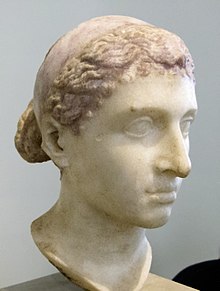
by fljustice | Apr 26, 2011 | Biographies, Books, Reviews, Wonderful Women
“Cleopatra: A Life” by Stacy Schiff
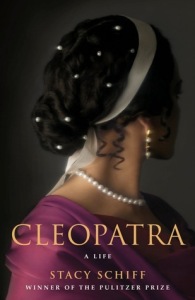 I have a soft spot for strong women in history. I’ve written about Hypatia, the Lady Philosopher of Alexandria; Empress Galla Placidia and her niece Pulcheria who both ruled Rome in its waning days. I’ve read about Boudica, Queen of the Iceni; Amanirenas, the one-eyed warrior queen of Kush; and Zenobia, Queen of Palmyra; all of whom defeated Roman armies, only to succumb later to that massive military machine. Most of my favorites are little known women who ruled countries, commanded armies and navies, dealt astutely with ruling male neighbors and made a difference in their people’s lives. I like to read and write about them because they are little known. I like introducing readers to new characters and broadening the scope of history. Occasionally, I’ll run across a woman I thought I knew, and find out I’m wrong. Cleopatra is one. (more…)
I have a soft spot for strong women in history. I’ve written about Hypatia, the Lady Philosopher of Alexandria; Empress Galla Placidia and her niece Pulcheria who both ruled Rome in its waning days. I’ve read about Boudica, Queen of the Iceni; Amanirenas, the one-eyed warrior queen of Kush; and Zenobia, Queen of Palmyra; all of whom defeated Roman armies, only to succumb later to that massive military machine. Most of my favorites are little known women who ruled countries, commanded armies and navies, dealt astutely with ruling male neighbors and made a difference in their people’s lives. I like to read and write about them because they are little known. I like introducing readers to new characters and broadening the scope of history. Occasionally, I’ll run across a woman I thought I knew, and find out I’m wrong. Cleopatra is one. (more…)
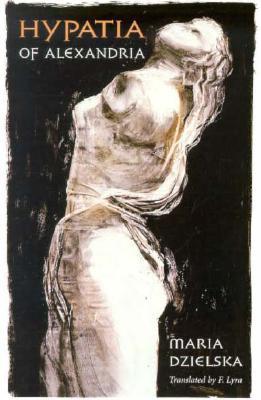
by fljustice | Mar 12, 2011 | Biographies, Books, Hypatia, Reviews, Wonderful Women
Hypatia of Alexandria: Two Books
It’s March—Women’s History Month and the anniversary of a remarkable woman’s death. In AD 415, a Christian mob murdered Hypatia, the renowned Lady Philosopher of Alexandria. The vicious act shocked the city and shamed the early Church. Socrates Scholasticus tells the story in his Historia Ecclesiastica:
“Hypatia, daughter of the philosopher Theon, who made such attainments in literature and science, as to far surpass all the philosophers of her own time…For all men on account of her extraordinary dignity and virtue admired her the more. Yet even she fell a victim to the political jealousy which at that time prevailed. For as she had frequent interviews with Orestes, it was calumniously reported among the Christian populace, that it was she who prevented Orestes from being reconciled to the bishop. Some of them therefore, hurried away by a fierce and bigoted zeal, whose ringleader was a reader named Peter, waylaid her returning home, and dragging her from her carriage, they took her to the church called Caesareum, where they completely stripped her, and then murdered her with tiles. After tearing her body in pieces, they took her mangled limbs to a place called Cinaron, and there burnt them. This affair brought not the least opprobrium, not only upon Cyril, but also upon the whole Alexandrian church. And surely nothing can be farther from the spirit of Christianity than the allowance of massacres, fights, and transactions of that sort. This happened in the month of March during Lent, in the fourth year of Cyril’s episcopate, under the tenth consulate of Honorius, and the sixth of Theodosius.”
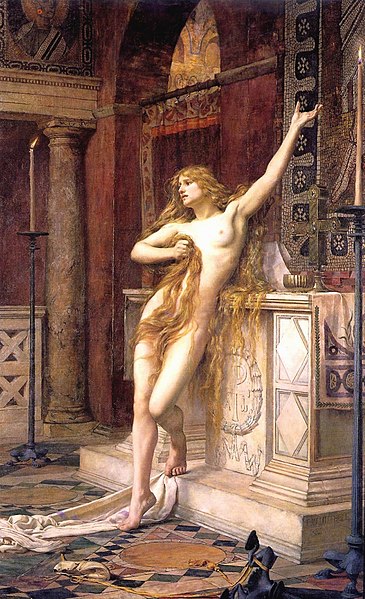
Hypatia, painted by Charles William Mitchell in 1885.
Since that time, only fragments about Hypatia’s life have come down to us; allowing poets, novelists, playwrights, scientists, feminists and religionists (both pro and anti) to appropriate her story for themselves. Her story has resonated down through the years, touching many people. She’s a major character in my novel Selene of Alexandria, the subject of the recent movie Agora directed by Alejandro Amenabar, and she rated a plate in Judy Chicago’s massive art piece The Dinner Party. She’s the subject of plays, poetry, propaganda and new age pagan polemics. Her life is represented in art and music. But what do we really know about her? Not much.
In researching my novel, I waded through a literary swamp, with no guide, trying to get at some coherent view of Hypatia and her story. She was young/middle aged/older when she died. She was single/married/promiscuous/virginal. She was a pagan/witch/Christian. She was a brilliant mathematician/scientist to some and, according to others, contributed nothing worthwhile in either discipline. I read the few primary sources, but didn’t have the academic background to evaluate their usefulness. Socrates was a contemporary, but a church historian. Damascius was a pagan who wrote a full generation later. John of Nikiu wrote 200 years later. Who had an agenda and what was it?
Two scholars have attempted to pull the pieces together in book form in the last two decades: Maria Dzielska, a Polish classics scholar, with Hypatia of Alexandria; and mathematics professor Michael A. B. Deakin with Hypatia of Alexandria: Mathematician and Martyr. I’ve read both, several times, in my research and want to share my thoughts. (more…)
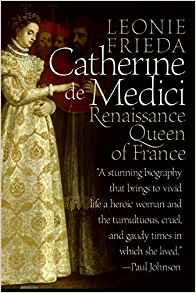
by fljustice | Jan 28, 2011 | Biographies, Books, Reviews, Wonderful Women
“Catherine de Medici: Renaissance Queen of France” by Leonie Frieda
Long, long ago in a youth far, far away, I read a biography of Catherine de Medici, so I was already familiar with her story. I have to admit, the details were hazy: I remembered something about poison, religious wars and that she was Mary, Queen of Scots’ mother-in-law. Then a couple of years ago, my husband and I took a biking vacation in the Loire valley and visited numerous castles and gardens along way, several associated with Catherine and her rival Diane de Poitiers; so I was reacquainted with the general outlines of her story. Which brings me to: Catherine de Medici: Renaissance Queen of France by Leonie Frieda.
 From the Introduction:
From the Introduction:
“Catherine de Medici has variously been called ‘The Maggot from Italy’s Tomb’, ‘The Black Queen’ and ‘Madame La Serpente’. To many she is the very incarnation of evil. It is, I believe, as mistaken a judgment as it is bigoted. Yet it is not far removed from the overall verdict of history on one of the most remarkable women of the sixteenth century.” (more…)
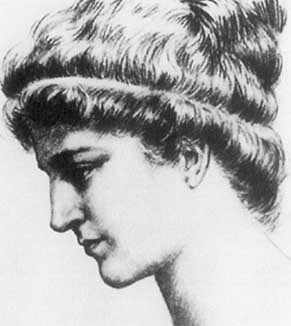
by Faith Justice | Jun 8, 2010 | Agora, Essays/Research, History, Hypatia, Movies, Reviews, Wonderful Women
Agora: the “Reel” vs. the “Real” Hypatia – Part III
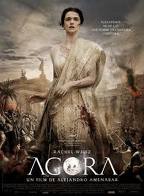 In Parts I & II of this series on the history behind the movie, I talked about several major historical events of the times and a couple of my favorite anecdotes that made it into the film. In Part III, I’ll look at the major characters, how they were portrayed in the film and what we know about their real lives. Because I’ve written so extensively about Hypatia (essays, guest blogs, a novel, and a non-fiction book) I’ll save her for last. (more…)
In Parts I & II of this series on the history behind the movie, I talked about several major historical events of the times and a couple of my favorite anecdotes that made it into the film. In Part III, I’ll look at the major characters, how they were portrayed in the film and what we know about their real lives. Because I’ve written so extensively about Hypatia (essays, guest blogs, a novel, and a non-fiction book) I’ll save her for last. (more…)

 Massie delivers a wonderfully researched and readable book. My knowledge of Catherine the Great was vague to the point of mythical. I had hazy memories of multiple lovers, a (possible) scandal about her and a horse, and a movie starring Greta Garbo. The lovers were real, but few; there was no mention of the horse; and the Garbo movie turned out to be about Queen Christina of Sweden who lived a century earlier. So much for memory.
Massie delivers a wonderfully researched and readable book. My knowledge of Catherine the Great was vague to the point of mythical. I had hazy memories of multiple lovers, a (possible) scandal about her and a horse, and a movie starring Greta Garbo. The lovers were real, but few; there was no mention of the horse; and the Garbo movie turned out to be about Queen Christina of Sweden who lived a century earlier. So much for memory.







